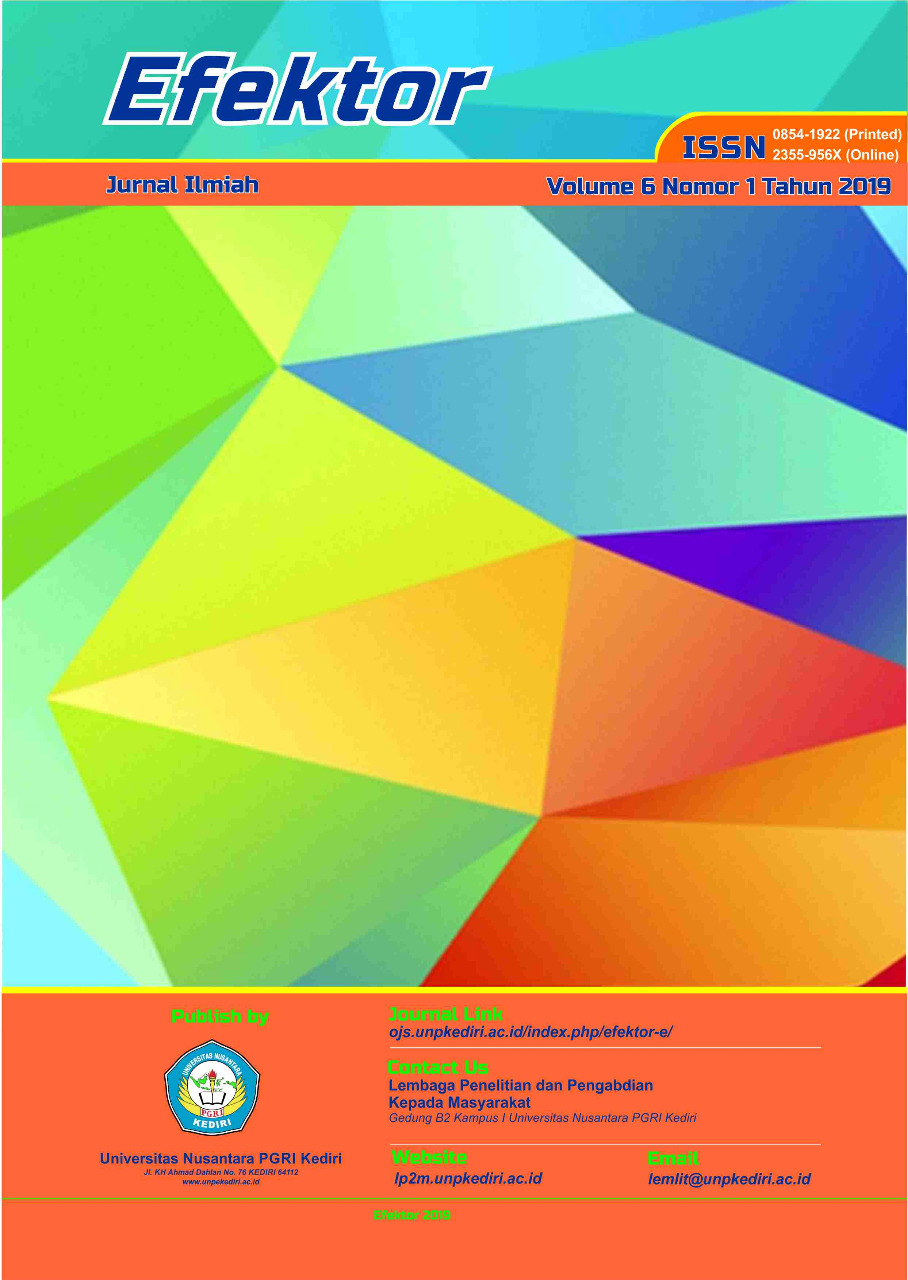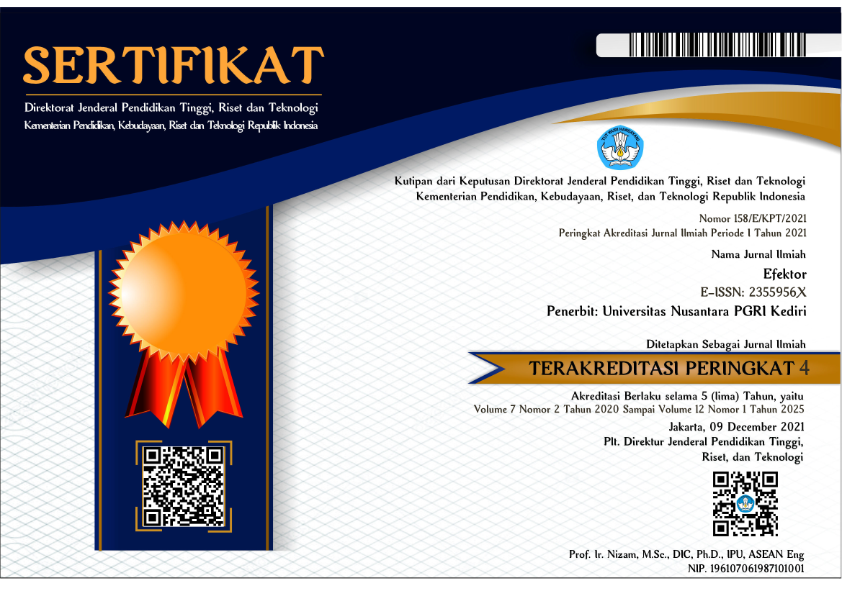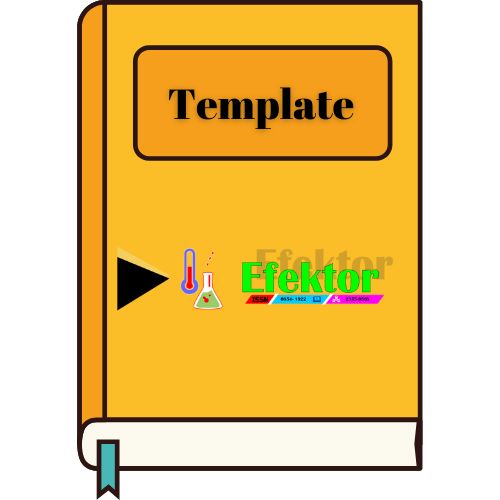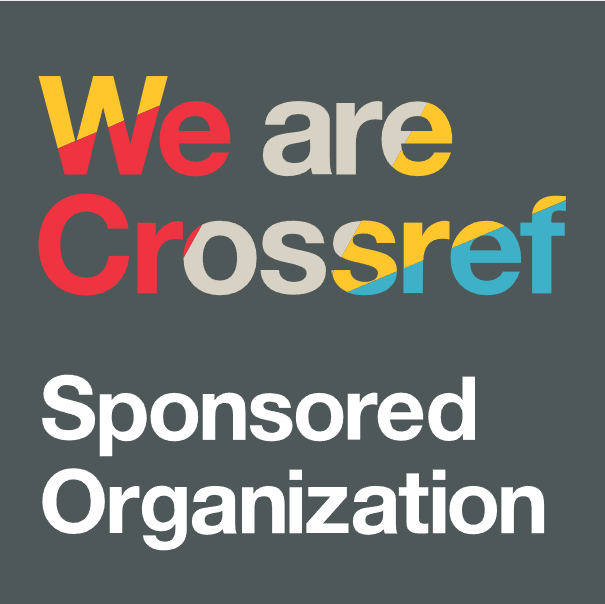Kelayakan Aspek Materi, Bahasa dan Media Pada Pengembangan Buku Ajar Statistika Untuk Pendidikan Olahraga Di IKIP Budi Utomo Malang
DOI:
https://doi.org/10.29407/e.v6i1.12552Keywords:
Feasibility of Material Aspects, Feasibility of Language Aspects, Feasibility of Media AspectsAbstract
Textbooks are supporting the success of learning. A varied and complete textbook will support learning so that it is easier to reach the goal. One of the compulsory subjects in the Physical Health and Recreation Education (PJKR) study program in Statistics. Based on the results of observations of researchers, a statistical book for sports education has never been developed, whereas based on needs analysis, a statistical textbook for sports education needs to be developed. Therefore, this study aims to develop a statistical textbook whose material content is related to sports using the 4D development model. Consisting of the stages of defining, designing, developing, and disseminating. This paper specifically describes in detail at the developing stage, which describes the feasibility of the material, language and media aspects of the book from the validator. Based on the results of the validation from material experts, languages and the media, it shows that textbooks are suitable for use in the field
References
Anderson, L. W., & Krathwohl, D. R. (2001). A taxonomy for learning, teaching, and assessing. New York: Longman.
Depdiknas. 2008. Panduan Pengembangan Bahan Ajar. Jakarta: Direktorat Pembinaan Sekolah Menengah Atas .
Direktorat Jenderal Pendidikan Tinggi. 2009. Pedoman Operasional Penilaian Angka Kredit Kenaikan Jabatan Fungsional Dosen ke Lektor Kepala dan Guru Besar. Jakarta: Kemendiknas.
Mbulu, J. dan Suhartono. 2004. Pengembangan Bahan Ajar. Malang: Elang Mas
Muslich, Masnur. 2010. Text Book Writing: Dasar-dasar Pemahaman, Penulisan, dan Pemakaian Buku Teks. Jogjakarta: Ar-Ruzz Media.
Prastowo, Andi. 2012. Panduan Kreatif Membuat Bahan Ajar Inovatif. Jogjakarta: Diva Press.
Santrock, J.W. (2008). Education psychology part 1 (2nded.). New York: Mc Graw Hill.
Sudjana, Nana. 2010. Penilaian Hasil Proses Belajar Mengajar. (Cet. XV). Bandung: PT. Ramaja Rosdakarya.
Sugiono, Dr., Prof., (2010), Metode Penelitian Kuantitatif Kualitatif Dan R&D, Alfabeta, Bandung.
Thiagarajan, S., Semmel, D.S., and Semmel, M.I.. 1974. Instructional Development for Training Teachers of Exceptional Children. Washington: National Center for Improvement of Educational.
Winarno, M. E. 2011. Metedologi Penelitian Dalam Pendidikan Jasmani. Malang: Media Cakrawala Utama Press
Wibowo, Wahyu. 2012. Menulis Buku Ajar Perguruan Tinggi. Jakarta: Bidik Phronesia Publishing
Woolfolk, A. (2009). Educational psychology active learning part 2 (10th¬¬ed.).Boston: Pearson.
Downloads
Published
Issue
Section
License
Authors who publish with this journal agree to the following terms:
- Copyright on any article is retained by the author(s).
- The author grants the journal, the right of first publication with the work simultaneously licensed under a Creative Commons Attribution License that allows others to share the work with an acknowledgment of the work’s authorship and initial publication in this journal.
- Authors are able to enter into separate, additional contractual arrangements for the non-exclusive distribution of the journal’s published version of the work (e.g., post it to an institutional repository or publish it in a book), with an acknowledgment of its initial publication in this journal.
- Authors are permitted and encouraged to post their work online (e.g., in institutional repositories or on their website) prior to and during the submission process, as it can lead to productive exchanges, as well as earlier and greater citation of published work.
- The article and any associated published material is distributed under the Creative Commons Attribution-ShareAlike 4.0 International License













